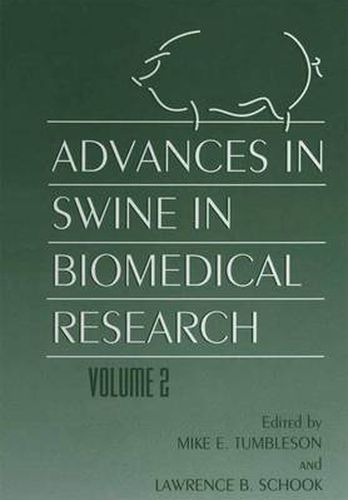Readings Newsletter
Become a Readings Member to make your shopping experience even easier.
Sign in or sign up for free!
You’re not far away from qualifying for FREE standard shipping within Australia
You’ve qualified for FREE standard shipping within Australia
The cart is loading…






This title is printed to order. This book may have been self-published. If so, we cannot guarantee the quality of the content. In the main most books will have gone through the editing process however some may not. We therefore suggest that you be aware of this before ordering this book. If in doubt check either the author or publisher’s details as we are unable to accept any returns unless they are faulty. Please contact us if you have any questions.
Similarities in structure and function between pigs and human beings include size, feeding patterns, digestive physiology, dietary habits, kidney structure and function, pulmo nary vascular bed structure, coronary artery distribution, propensity to obesity, respiratory rates, tidal volumes and social behaviors. Since the pig is an omnivore, it provides an adaptable model to evaluate chronic and acute exposures to xenobiotics such as alcohoL caffeine, tobacco, food additives and environmental pollutants. Swine have been used successfully as models to evaluate alcoholism, diabetes, absorption, digestion, total paren teral nutrition, organ transplantation, atherosclerosis, exercise, hypertension. hemorrhagic hypotension, melanoma, gingivitis, obstructive and reflux nephropathy. osteochondrosis. dermal healing and septic shock. A severe and worsening shortage of organs and tissues for transplantation in patients with severe organ failure has encouraged the consideration of inter species or xenotransplan tation. In developing programs toward this end, the pig generally is viewed as the preferred donor because of its size, physiology and availability. The pig harbors relatively few diseases which could be transmitted inadvertently to human patients. The ability to genetically modify swine to ameliorate the consequences of the human immune response offers a further significant advantage. Another important consideration for an animal model is that basic biologic back ground information be available for investigators to design future prospective studies.
$9.00 standard shipping within Australia
FREE standard shipping within Australia for orders over $100.00
Express & International shipping calculated at checkout
Stock availability can be subject to change without notice. We recommend calling the shop or contacting our online team to check availability of low stock items. Please see our Shopping Online page for more details.
This title is printed to order. This book may have been self-published. If so, we cannot guarantee the quality of the content. In the main most books will have gone through the editing process however some may not. We therefore suggest that you be aware of this before ordering this book. If in doubt check either the author or publisher’s details as we are unable to accept any returns unless they are faulty. Please contact us if you have any questions.
Similarities in structure and function between pigs and human beings include size, feeding patterns, digestive physiology, dietary habits, kidney structure and function, pulmo nary vascular bed structure, coronary artery distribution, propensity to obesity, respiratory rates, tidal volumes and social behaviors. Since the pig is an omnivore, it provides an adaptable model to evaluate chronic and acute exposures to xenobiotics such as alcohoL caffeine, tobacco, food additives and environmental pollutants. Swine have been used successfully as models to evaluate alcoholism, diabetes, absorption, digestion, total paren teral nutrition, organ transplantation, atherosclerosis, exercise, hypertension. hemorrhagic hypotension, melanoma, gingivitis, obstructive and reflux nephropathy. osteochondrosis. dermal healing and septic shock. A severe and worsening shortage of organs and tissues for transplantation in patients with severe organ failure has encouraged the consideration of inter species or xenotransplan tation. In developing programs toward this end, the pig generally is viewed as the preferred donor because of its size, physiology and availability. The pig harbors relatively few diseases which could be transmitted inadvertently to human patients. The ability to genetically modify swine to ameliorate the consequences of the human immune response offers a further significant advantage. Another important consideration for an animal model is that basic biologic back ground information be available for investigators to design future prospective studies.